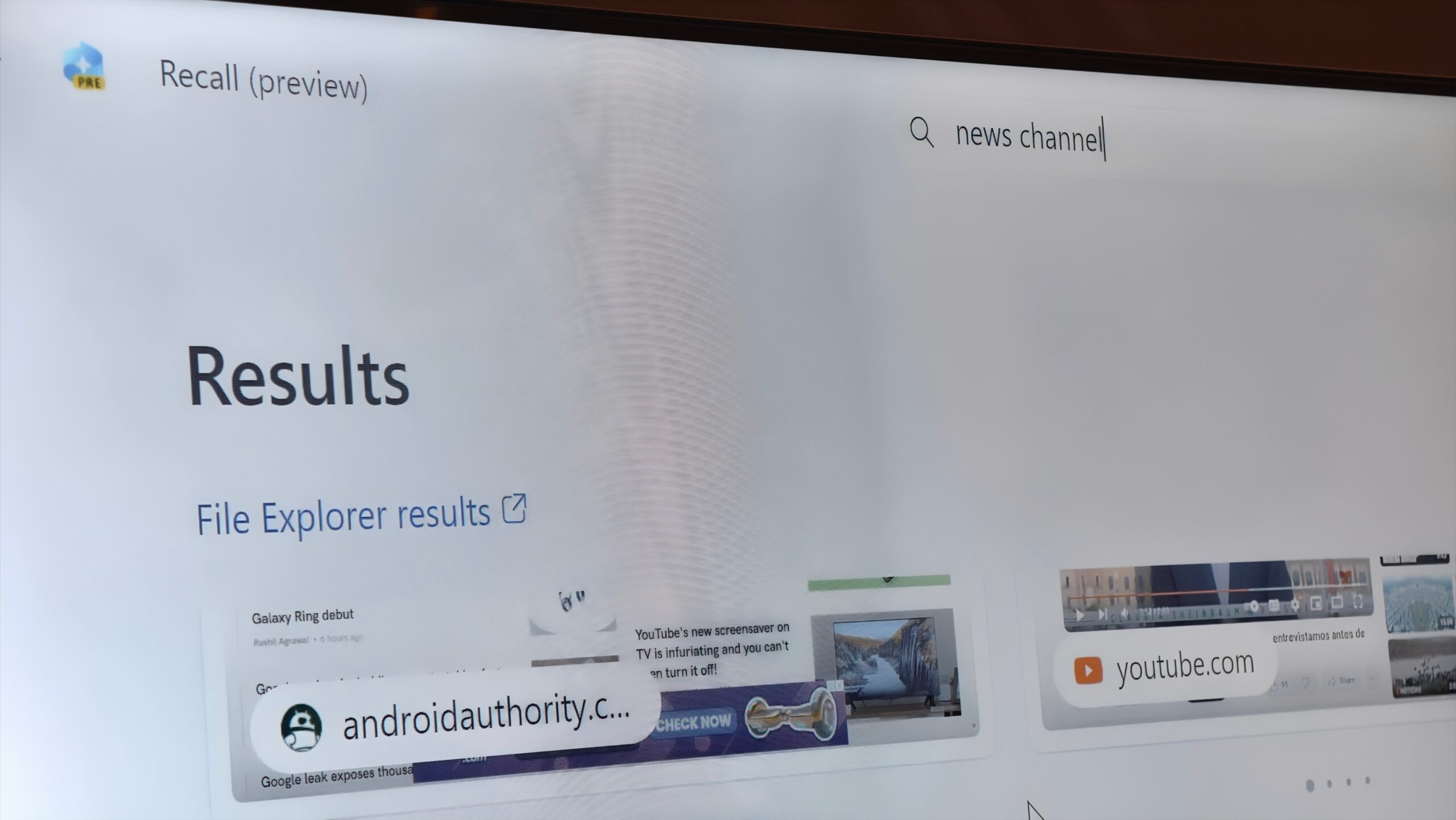Affiliate links on Android Authority may earn us a commission. Learn more.
Microsoft finally responds to Recall backlash, will make several changes

- After weeks of public outcry over the upcoming Microsoft Windows Recall feature, Microsoft has finally announced changes in response.
- The company will make it clearer during the initial setup that you can opt out and will also incorporate Windows Hello for added security.
- These changes will roll out before June 18, when the public will first have access to Recall-enabled systems.
For the past few weeks, the tech world has been discussing a controversial new Windows feature called Recall. This feature — which is not out yet but has been previewed by the press and select researchers — takes a snapshot of your Windows system every few seconds. These screenshots can then be searched using AI so you can copy text, download images, or simply look at what you were doing at a specific time so you can recreate that particular situation.
Now, due to public backlash to what appears to be an invasive and insecure product, Microsoft has announced a response to this controversy. In a lengthy blog post, the company lays out three core changes it is making to Recall:
- The set-up experience of Copilot Plus PCs will include a new step that explicitly explains Recall and gives users a simple way to opt out, if desired.
- To use Recall, you must set up Windows Hello (Windows’ biometric security system). Additionally, proof of presence will be required to access Recall. In other words, you will need to have your face (or fingerprint, depending on the system) scanned to open Recall and view your screenshots, thus preventing someone else from accessing them — even another user on that same computer.
- The cache of images — as well as the search index database, which is essentially just text — will be encrypted. Furthermore, the images will only be decrypted when requested, so the user must authenticate with Windows Hello before any screenshots will even be readable by the system.
These three changes will roll out now to Copilot Plus PCs, so they should be ready and waiting when the public first experiences Recall on June 18.
In addition to these new changes to Recall, Microsoft also emphasizes existing features of the system that will help keep it private and secure. This includes snapshots and text data only being stored locally, a persistent system tray notification showing that Recall is taking snapshots, and the fact that DRM services and InPrivate browsing sessions (Microsoft Edge’s version of Chrome’s Incognito Mode) will block Recall snapshots. Additionally, users can always pause, filter, or delete what Recall saves at any time.
Our take: Recall isn’t what we want
While Microsoft should be commended for hearing the public outcry related to Recall and making changes to better reflect what people want, it doesn’t change the fact that Recall is a solution looking for a problem. There aren’t many Windows users out there who want screenshots of their system saved every five seconds. It just isn’t a thing people are looking for.
Instead, what people actually want is a better way to search Windows. Even with an incredibly powerful CPU, a search in File Explorer for a specific document or file can take upwards of ten minutes. Even then, you can’t readily search within documents to find what you’re looking for, so your search results may or may not include documents with your search term if it isn’t included in the file name itself.
What Microsoft should focus on is making traditional search in Windows faster and more effective. That would be a much bigger deal to Windows users than whatever Recall could offer them.
Regardless, it’s good to see Microsoft make it easier to opt out of Recall, as we expect that’s what most people will end up doing.